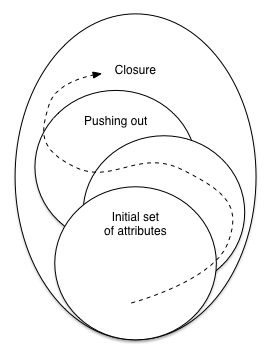About this Chapter
- The focus of this chapter is on designing database schemas
- This is the problem of modeling
- I.e., how do we represent the real world inside a database?
- Remember, all we have to work with is tables!
- So how do we encode the real world in a bunch of tables?
- There are many pitfalls and traps
- Luckily, there is a well understood theory of relational database design
- This is a very mathematical theory
- But don't be fooled: It's tremendously useful
- (Actually, that's the reason we study math -- it's tremendously useful!)
